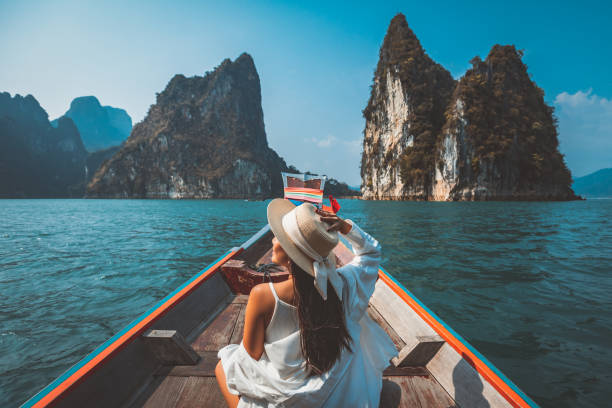In the realm of investments, a common pursuit among investors is to identify opportunities that align with their financial objectives while also offering flexibility for potential returns. HDFC Flexi Cap Fund emerges as a noteworthy choice in this regard, characterized by its versatile approach to investments. This mutual fund provides investors with the flexibility to allocate their funds across different types of stocks, allowing it to adapt to diverse market conditions. The significance of this flexibility becomes evident in the pursuit of potential returns over time.
This article aims to delve into the fundamental aspects of understanding HDFC Flexi Cap NAV, an essential metric in mutual fund investing and highlights how it plays a pivotal role in assisting investors in unlocking potential returns. By comprehending the basics of NAV and its relationship with HDFC Flexi Cap, investors can make more informed decisions, aligning their investments with their financial goals and navigating the path to potential returns with confidence.
What is HDFC Flexi Cap?
HDFC Flexi Cap is an Investment option known for its exceptional flexibility. This mutual fund allows investors to allocate their funds across various types of stocks. Making it adaptable to different market conditions.
This adaptability proves valuable in pursuing potential returns over an extended period. Specifically, the HDFC Flexi Cap is a scheme under the Flexi Cap category.
HFDC has a remarkable track record of 29 years and 1 month since its launch on 08-12-1994.
Notably, its ability to control losses during a market downturn is also considered high, providing a level of resilience for investors.
This strategic allocation reflects the fund’s objective, which is to generate capital appreciation. Income primarily from a portfolio invested in equity and equity-related instruments.
Investors considering HDFC Flexi Cap-Growth can appreciate its long-standing presence in the market, consistent performance. And diversified portfolio aimed at capital appreciation.
Why Net Asset Value Matters (NAV)
The Net Asset Value (NAV) holds significant importance for investors, particularly in mutual funds such as HDFC Flexi Cap.
It serves as a key metric, representing the value attributed to each unit within the fund.
Monitoring the NAV is akin to evaluating the performance of the fund in real-time. Providing investors with insights into its current status at any given moment.
The NAV essentially quantifies the worth of each unit of the mutual fund, offering a snapshot of its market value.
For HDFC Flexi Cap and similar funds, comprehending the NAV is crucial for gauging their overall performance and assessing the potential returns that investors might anticipate.
The NAV is indicative of how well the fund is faring in the market.
As an example, the current Net Asset Value (NAV) of HDFC Flexi Cap is Rs.1511.525.
This figure reflects the current valuation of each unit in the fund, allowing investors to grasp the present market standing of their investment.
A rising NAV generally suggests positive performance, while a declining NAV might prompt investors to exercise caution.
In essence, the Net Asset Value is a dynamic indicator that provides investors with valuable information, enabling them to make informed decisions based on the real-time performance of the Mutual Fund.
Role of HDFC Flexi Cap NAV
Checking Performance
By looking at HDFC Flexi Cap NAV regularly, investors can see how well the fund is performing.
A rising NAV may mean good news, while a falling NAV could signal caution.
Smart Decision-Making
Investors can use NAV information to make smart decisions. Knowing how the NAV changes helps them make choices that align with the ups and downs of the market.
Managing Risks
Following HDFC Flexi Cap NAV helps in managing risks effectively. It gives investors an idea.
how the fund reacts to changes in the market, helping them understand and control the level of risk in their investment
Thinking Long-Term
HDFC Flexi Cap aims to help investors create wealth over time. Looking at how the NAV has performed historically gives a glimpse into the fund’s ability. Deliver returns over the long run.
Factors Consider Before Investing
Financial Goals
Define your financial goals, whether it’s wealth creation, retirement planning, education funding, or other objectives. Your goals will guide your investment strategy.
Risk Tolerance
Assess your risk tolerance. Understand how comfortable you are with the possibility of fluctuations in the value of your investments. This will influence the types of assets you choose.
Investment Horizon
Determine your investment horizon. how long you plan to keep your money invested.
Different investments are suitable for short-term, medium-term, and long-term goals.
Diversification
Spread your investments across different asset classes (stocks, bonds, real estate, etc.) to reduce risk.
Diversification can help balance the overall performance of your portfolio.
Market Conditions
Stay informed about current market conditions.
Economic indicators, interest rates, and geopolitical events can impact different asset classes.
Liquidity Needs
Consider your liquidity needs.
Ensure you have sufficient cash or liquid investments to cover any short-term expenses or emergencies.
Historical Performance
Review the historical performance of the investment.
While past performance doesn’t guarantee future results, it provides insights into how the investment has behaved over time.
Fundamental Analysis
For stocks and other securities, conduct fundamental analysis.
Assess the financial health, management, and growth potential of the companies you’re considering.
Tax Implications
Understand the tax implications of your investments.
Different types of investments have varying tax treatments, so consider the tax efficiency of your portfolio.
Regulatory Environment
Stay aware of the regulatory environment.
Changes in regulations can impact the performance and taxation of certain investments.
Professional Advice
Seek advice from financial professionals. Consult with a financial advisor or investment expert. Get personalized guidance based on your unique financial situation and goals.
Investment Research
Conduct thorough research on the investments you’re considering.
Stay informed about the companies, industries, or markets associated with your chosen assets.
Conclusion
HDFC Fund offers a flexible and resilient investment option for those seeking potential returns. With a 29-year track record, strategic sector allocation, and the ability to control losses, the fund aligns well with the goal of capital appreciation. Understanding Net Asset Value (NAV) is crucial for investors, acting as a guide toward potential returns.
Consideration of factors like financial goals, risk tolerance, and market conditions is paramount. Thorough research, understanding tax implications, and seeking professional advice enhance informed decision-making. Introducing a Systematic Investment Plans (SIP) adds discipline and consistency to the investment approach, making HDFC Fund an attractive choice for a dynamic investment journey.



